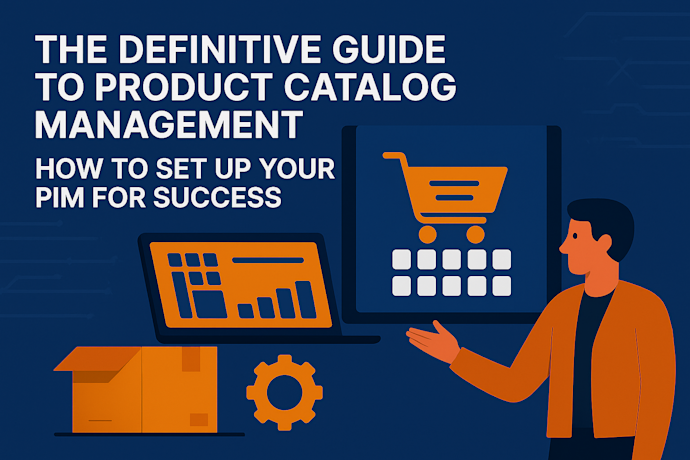
A PIM (Product Information Management) software functions as a single source of truth (SSoT) for many manufacturers working with large amounts of product data. Working with PIM platforms can help you streamline multiple product data channels across print & digital media.
Why PIM Is Essential for Scalable eCommerce Success
PIM & online commerce
A buyer’s journey to a sale is influenced by several interactions across an increasing number of channels today. There is a crucial need to present accurate and valid product information for what the consumer wants, and this is where a PIM can help.
Reducing time-consuming and error-prone product data management using legacy systems and spreadsheets, a PIM can be used as a dedicated place that will shorten a product’s time to market while increasing revenue, agility, and compliance.
A PIM reduces the negative impact of product data management and increases the margins generated on sales in newer channels such as eCommerce.
How does implementing a PIM system help?
As a new generation of buyers turn to new technology to search for, choose, and buy the products they want, manufacturers need to be able to present their up-to-date product data consistently across multiple channels. This is where manufacturers who use PIM systems come out on top.
Manufacturers that use a dedicated PIM have the advantage of storing all their product data in a centralised location which makes it easy to access and share with supplier and customers. This creates an efficient workflow while integrating emerging innovative applications like chatbots and voice.
When you implement PIM software it structures product data so you can integrate machine learning and AI to offer users enhanced product search and personalised product recommendations that can improve the buyer’s journey.
How do you go about implementing a PIM?
Once you’ve decided it’s time to say goodbye to your old, clunky way of managing product data, it’s time to switch over to Pimcore. Here’s what you need to do when considering a PIM platform:
1. Find you data
Identify data sources and collect them so different teams and departments (marketing, sales, etc.) can access the latest version.
2. Format your data
The right PIM software will allow you to import data from multiple sources and customise it so it can be consistently shared across channels.
3. Identify redudant data
It’s a good idea to check that data being entered into the PIM isn’t duplicated across departments/teams. This will reduce the time and effort spent in ensuring product data is up-to-date at a later stage.
4. Identify inaccurate data
Organise your product data by carefully reviewing it for accuracy before migrating onto a PIM. This will reduce errors such as misquotes during sales calls or stocking unavailable SKUs.
5. Ensure data is compliant
Review the data to be uploaded into the PIM to ensure that it is compliant with regulatory practices in the country your product is being manufactured as well as where it is sold. Product data with no real ownership can be easily traced when you use a product information management system.
So, why should your business get a PIM?
Every business is different and a good PIM software is flexible enough to take that into account. An open source PIM like Pimcore allows you to configure your product information according to what you need. Whether it’s using an API-led approach to create a customer-first strategy or Cloud configuration to ensure all your data is easily accessible by anyone who needs to across the globe, your PIM software can be manipulated to increase the reach of business while creating auditable workflows.
If you think a PIM solution can work for your business and we’d love to know more about how you work with your product data.


